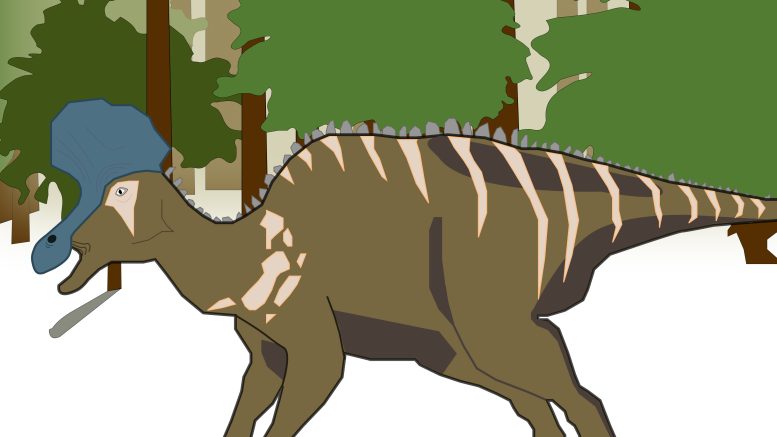As a child, Kirstin Brink loved dinosaurs.
Today, she is a vertebrate paleontologist and assistant professor in the U of M’s department of geological sciences. Her research involves studying living animal models to better understand extinct species. She has worked with living animals, fossilized dinosaurs and plants.
“I took some earth sciences courses in my undergrad […] and I remembered the excitement that I had for dinosaurs when I was a kid,” Brink said. “It just led to a career as a paleontologist which is, I think, every six-year-old’s dream.”
Brink’s research program explores the evolution, development and ecology of biomineralized tissues. Biomineralization is the process by which living organisms use minerals to form the tissues and structures of their bodies.
Bones, teeth, and otoliths — the ear stones of fish — are examples of biomineralized tissues. They are the most common fossils found in the fossil record. Their evolution led to an explosion of new vertebrate species, each adapted to a specialized mode of life.
One interesting aspect of biomineralized tissues, Brink noted, is that they grow incrementally.
“Every day, there’s a little bit of tissue added, and it forms lines in the tissue,” she said. “You can cut them open, cut open a tooth or cut open a bone, and you can actually count the lines and figure out how old that animal was, or how fast that bone or tooth was growing, or the fish otolith was growing.”
One study co-authored by Brink examined an extinct species of lambeosaurine hadrosaurid dinosaurs – a lineage of the herbivorous duck-billed dinosaur family.
Lambeosaurines can be identified by large crests on their heads. Several functions for these crests have been proposed. Some researchers suggest that the extended breathing passage in the crest resonates and amplifies sounds the dinosaur produces. Others believe the crests serve as expanded olfactory membranes that improve the animal’s sense of smell. Theories that the crests may have been used for air storage, snorkeling or combat are less supported by the evidence.
In her study, Brink looked at a lambeosaurine discovered in 1968 and initially named Procheneosaurus convincens. The species is known from the first and only full dinosaur skeleton from central Asia and Kazakhstan. The skeleton belongs to a young individual of helmeted dinosaur. Comparisons with other juvenile hadrosaur species allowed Brink’s study to rename the species to Kazaklambia convincens.
Kazaklambia convincens and others in the hadrosauridae group were highly successful and influential herbivores due to their large size, broad diet of plants and unique ability to feed at heights up to five meters above the ground, letting them access plants not available to other herbivores.
Following a catastrophic asteroid impact, all dinosaurs, including Kazaklambia convincens, were extinct 66 million years ago.
Brink explained that the fossil record provides information on how extinct animals adapted and failed to adapt to their environments, which is valuable when making projections for the future.
As climate change causes the planet to warm, these projections become especially important. Many fossils that Brink examined belonged to a time in the earth’s history with extremely high temperatures. In that period, a seaway covered Manitoba due to heat melting away the ice.
“Looking at how animals survived in an environment like that, and then why they ultimately went extinct, is pretty interesting,” Brink said.
Examining how extinct animals reacted to their environments, what conditions they could tolerate and how structures in their bones and teeth helped them adapt to their changing world helps researchers like Brink understand how animals react to environmental changes today.
Brink encouraged the university community to take time to enjoy the complexity of the natural world.
“There’s millions and millions of years of change that has happened on earth and so much of it is preserved in Manitoba that we can actually study,” she said.
“Everything we see now is constantly changing. So take time to appreciate that.”



